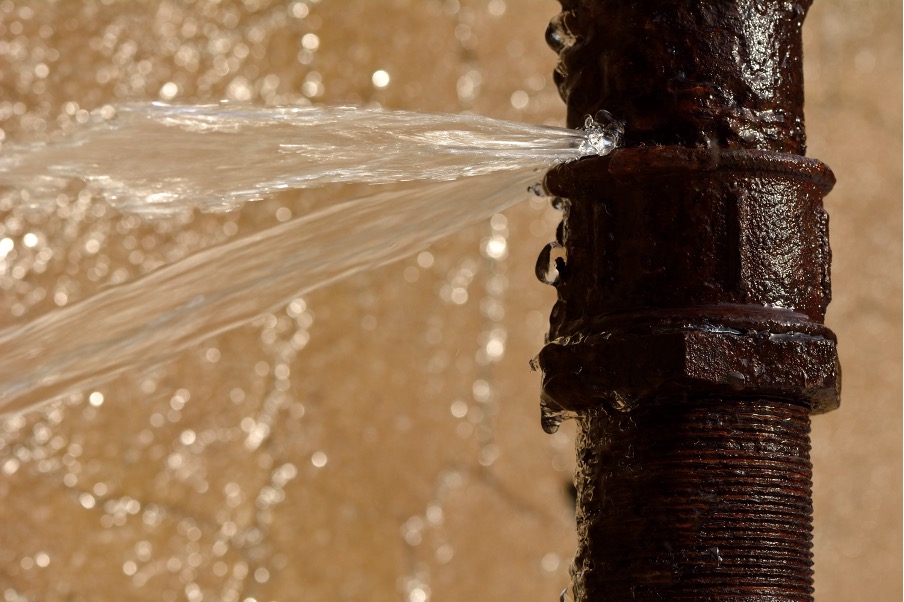How to Check If Your Residence Has a Surprise Leakage
How to Check If Your Residence Has a Surprise Leakage
Blog Article
Just about everyone may have his or her own perception involving Detecting hidden plumbing leaks.

Early detection of dripping water lines can minimize a potential catastrophe. Some small water leaks may not be visible.
1. Take A Look At the Water Meter
Every residence has a water meter. Checking it is a surefire way that assists you uncover leakages. For beginners, switch off all the water resources. Ensure no person will certainly purge, make use of the faucet, shower, run the washing machine or dishwasher. From there, go to the meter and watch if it will change. Because nobody is utilizing it, there should be no movements. If it moves, that indicates a fast-moving leakage. Furthermore, if you identify no changes, wait a hr or 2 as well as inspect back once more. This means you may have a slow-moving leakage that might even be underground.
2. Examine Water Consumption
If you identify sudden adjustments, in spite of your consumption being the very same, it implies that you have leakages in your plumbing system. An unexpected spike in your costs suggests a fast-moving leakage.
On the other hand, a steady rise monthly, despite having the exact same behaviors, shows you have a slow-moving leak that's likewise slowly escalating. Call a plumber to extensively check your property, particularly if you really feel a warm area on your flooring with piping below.
3. Do a Food Coloring Test
When it comes to water intake, 30% comes from commodes. If the shade in some way infiltrates your dish throughout that time without flushing, there's a leakage in between the container and also dish.
4. Asses Outside Lines
Do not neglect to examine your outside water lines as well. Should water permeate out of the link, you have a loose rubber gasket. One little leakage can squander lots of water and increase your water costs.
5. Check and Analyze the Scenario
Property owners should make it a behavior to inspect under the sink counters and also inside cupboards for any bad odor or mold and mildew growth. These 2 red flags indicate a leakage so prompt focus is required. Doing regular evaluations, also bi-annually, can save you from a significant issue.
If you know your residence is already old, maintain a careful eye on your heaters, hoses, pipelines etc. Check for discolorations and damaging as many appliances and also pipes have a life span. They will certainly also naturally deteriorate as a result of tear as well as use. Do not wait for it to rise if you think dripping water lines in your plumbing system. Call a specialist plumber right away so you do not end up with a dreadful mess in your home.
Early discovery of dripping water lines can mitigate a potential catastrophe. Some small water leakages might not be visible. Checking it is a surefire way that assists you discover leaks. One tiny leak can waste tons of water as well as surge your water costs.
If you believe dripping water lines in your plumbing system, do not wait for it to intensify.
WARNING SIGNS OF WATER LEAKAGE BEHIND THE WALL
PERSISTENT MUSTY ODORS
As water slowly drips from a leaky pipe inside the wall, flooring and sheetrock stay damp and develop an odor similar to wet cardboard. It generates a musty smell that can help you find hidden leaks.
MOLD IN UNUSUAL AREAS
Mold usually grows in wet areas like kitchens, baths and laundry rooms. If you spot the stuff on walls or baseboards in other rooms of the house, it’s a good indicator of undetected water leaks.
STAINS THAT GROW
When mold thrives around a leaky pipe, it sometimes takes hold on the inside surface of the affected wall. A growing stain on otherwise clean sheetrock is often your sign of a hidden plumbing problem.
PEELING OR BUBBLING WALLPAPER / PAINT
This clue is easy to miss in rooms that don’t get much use. When you see wallpaper separating along seams or paint bubbling or flaking off the wall, blame sheetrock that stays wet because of an undetected leak.
BUCKLED CEILINGS AND STAINED FLOORS
If ceilings or floors in bathrooms, kitchens or laundry areas develop structural problems, don’t rule out constant damp inside the walls. Wet sheetrock can affect adjacent framing, flooring and ceilings.
https://www.servicemasterbyzaba.com/blog/how-to-detect-water-leakage-in-walls/

I was made aware of that article about Detecting hidden plumbing leaks from an acquaintance on a different web address. Enjoyed reading our content? Please share it. Help other people find it. Thank you for going through it.
Report this page